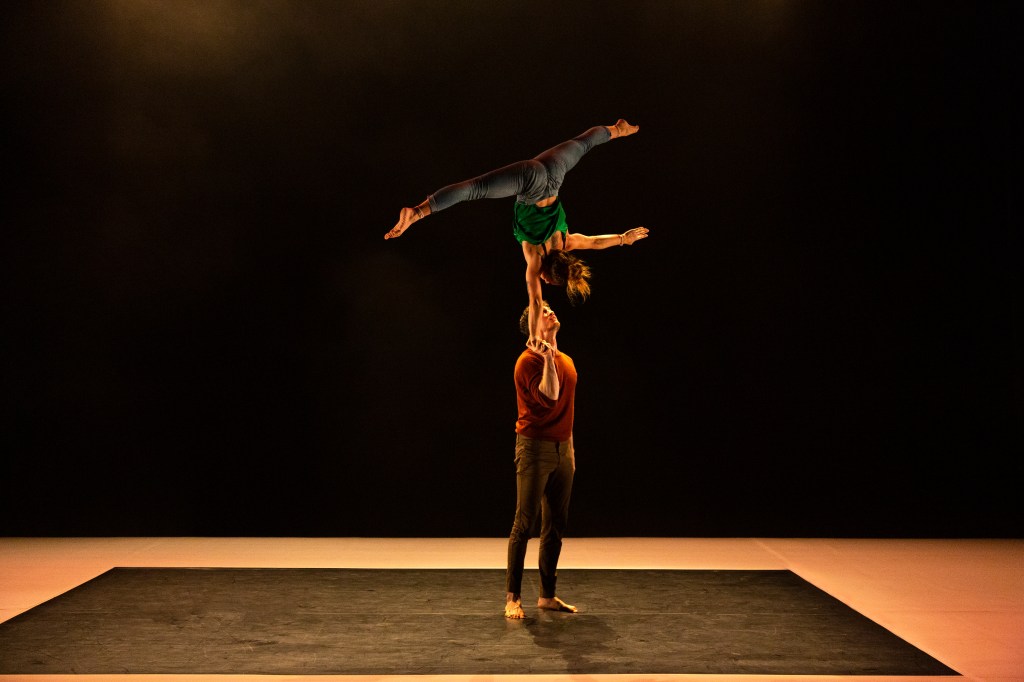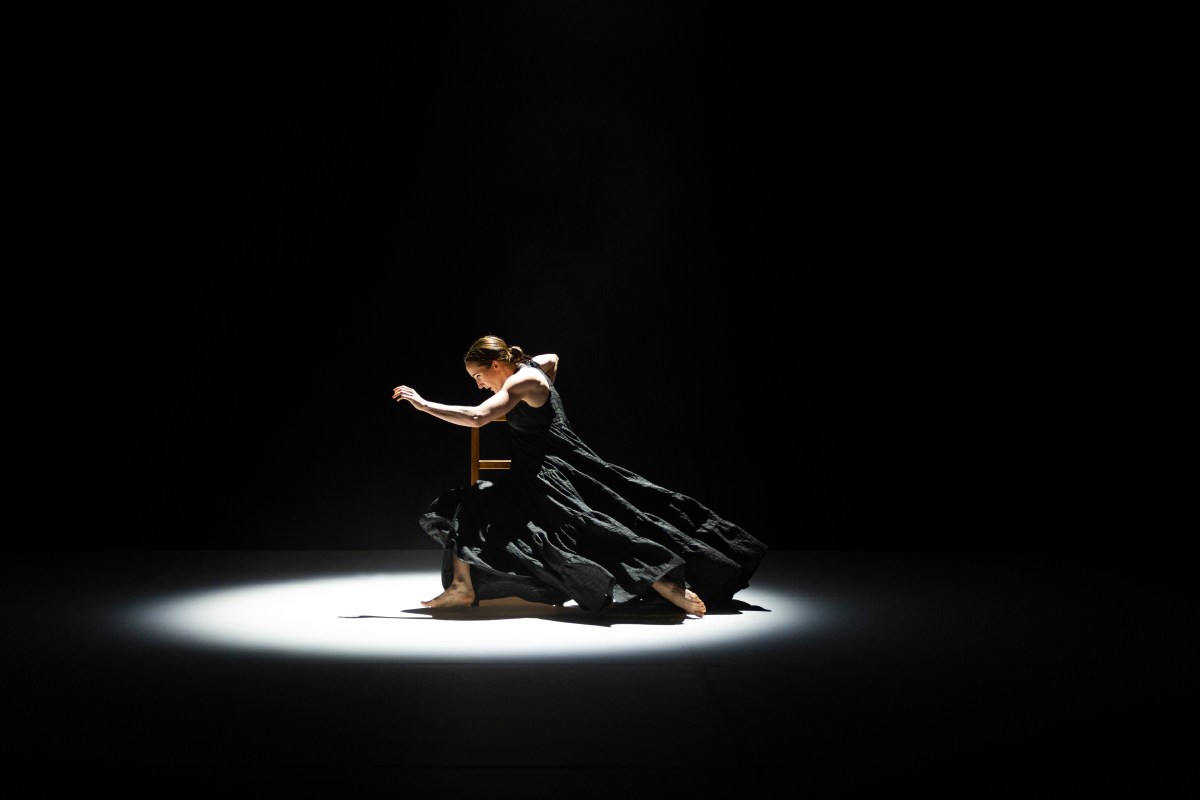Having started life in Brisbane in 2004, Circa Contemporary Circus has now become an international touring company recognised as a leading performance company around the world and with an ever-increasing following. In just under 20 years the company has grown exponentially from a small local company to performing in more than 40 countries across six continents and to well over 1.5 million people worldwide.
Under Yaron Lifschitz’s artistic direction, Circa is at the forefront of contemporary physical theatre with its blend of new wave circus, movement, dance and theatre. While many of its shows are family and children orientated, such as Carnival of the Animals and Shaun the Sheep’s Circus Show, some are definitely designed to find new adult audiences as well.
Circa’s latest production, On by Circa, certainly fitted the adult bill. Created by Lifschitz with his ensemble of eight performers, this latest work was inspired by the aftermath of COVID and the impact on our lives and social behaviour. At the same time, he explored the limits of physical performance with his exceptional, multi-skilled circus artists, and created a moving narrative that was as much a dance and theatre work as it was pure circus. In fact, the genre appeared to be a choreographed dance, the ‘On’ in the title referring as much to physical movement on stage as to being ‘ignited’ by others.
Lifschitz has famously said that he does not tell stories but that he creates structures and spaces in which stories become possible. Nevertheless, the narrative of On by Circa became clear early on as we watched the eight separate lives duck and weave, physically touching or spurning one another, becoming intimate and drawing away. A lack of any circus equipment such as the usual ropes, swings and drapes heightened their physical encounters in many diverse ways with quirky, humorous and even sad situations.
READ: Circus review: Carnival of the Animals
The theatrical opening set the scene for what was to follow. The curtain was raised on an empty stage and a large rectangle of light lit in the middle of the stage. Accompanied by a loud gunshot noise, a body hurled itself into the rectangle as if dead. More followed until all eight bodies lay prostrate on the floor, immobile. Gradually they came to life and a rhythmic choreographic pattern began and developed. Senses were sharpened and interest was certainly piqued.
The ensemble of four men and four women, dressed in a mix of street garb, spent the next 70 minutes demonstrating their circus and movement skills through a continuous stream of leaps and jumps, somersaults and acrobatics. All eight performers interacted constantly and rhythmically with each other, in a complex arrangement of duets, quartets and octets. How they remembered the repetitive nature of their multilayered sequences with various partners, each slightly different to the last and with no verbal dialogue to give clues, was by itself astounding.
There was an energy and frenzy involved in many sections, where they flung themselves across the stage with abandon. They also built death-defying pyramids, some with the entire cast hanging precariously off the central character. Additionally, there were slow, gentle moments where a touch of fingers produced a tentative display of emotion or a dreamy balletic dance sequence. Often a performer was held aloft by their feet or turned upside down and flung between two or more of the artists, deftly caught on the other side of the rectangle.
This is such an ensemble piece with equal workload and value placed on every one of the artists, whose trust in each other is paramount. Nevertheless, it is worth commenting on the particular skills of Rhiannon Cave-Walker, whose physique and strong balance, hand and body control enabled her to consistently take on a major acrobatic role.

Additionally, production values were of the highest quality. A simple, bare stage was brilliantly lit by Paul Jackson, with primary colours bathing the rectangle in vivid hues of red, blue and green. The performers inhabited that space, with its inner central square of contrasting colour. Jackson lit the artists perfectly; their faces and bodies were consistently in direct view so each gesture and emotion was clearly visible. The stage colours changed regularly, as the mood and relationships also changed.
The matting above the square was removed midway through the show to reveal a potentially dangerous black hole. A sequence followed when a human bridge to cross the void was cleverly and amusingly created, as performers tottered precariously over the edge.
Jethro Woodward’s contemporary musical soundscape worked beautifully with the evocative lighting to heighten the emotional drama of the work. His innovative use of technology, seeming to include live instrumental music and pre-recorded electronic sounds, was layered and textured with precision. Gunshots, a ticking clock, a range of clicks and bangs, persistent popping noises as well as techno drum beats, lent a powerful strength to the production.
Lifschitz has taken circus to a whole new artform in this thought-provoking, highly-charged and questioning adult work. In creating it, he asked the question ‘what is possible in circus?’ The answer seemed crystal clear. In this imaginative, risky and choreographed polished production, On by Circa explored new boundaries and was astonishing in its realisation.
On by Circa
Presented by QPAC and Circa
created by Yaron Lifschitz and the Circa Ensemble
Playhouse Theatre, QPAC, Brisbane
Director: Yaron Lifschitz
Composer and Sound Designer: Jethro Woodward
Lighting Designer: Paul Jackson
Costume Designer: Libby McDonnell
Executive Producer: Danielle Kellie
Technical Director: Jason Organ
Ensemble: Holly-Rose Boyer, Rhiannon Cave-Walker, Gerramy Marsden, Alice Muntz, Daniel O‘Brien, Paul O‘Keeffe, Lachlan Sukroo, Billie Wilson-Coffey
On by Circa was performed from 23-26 November 2022.





